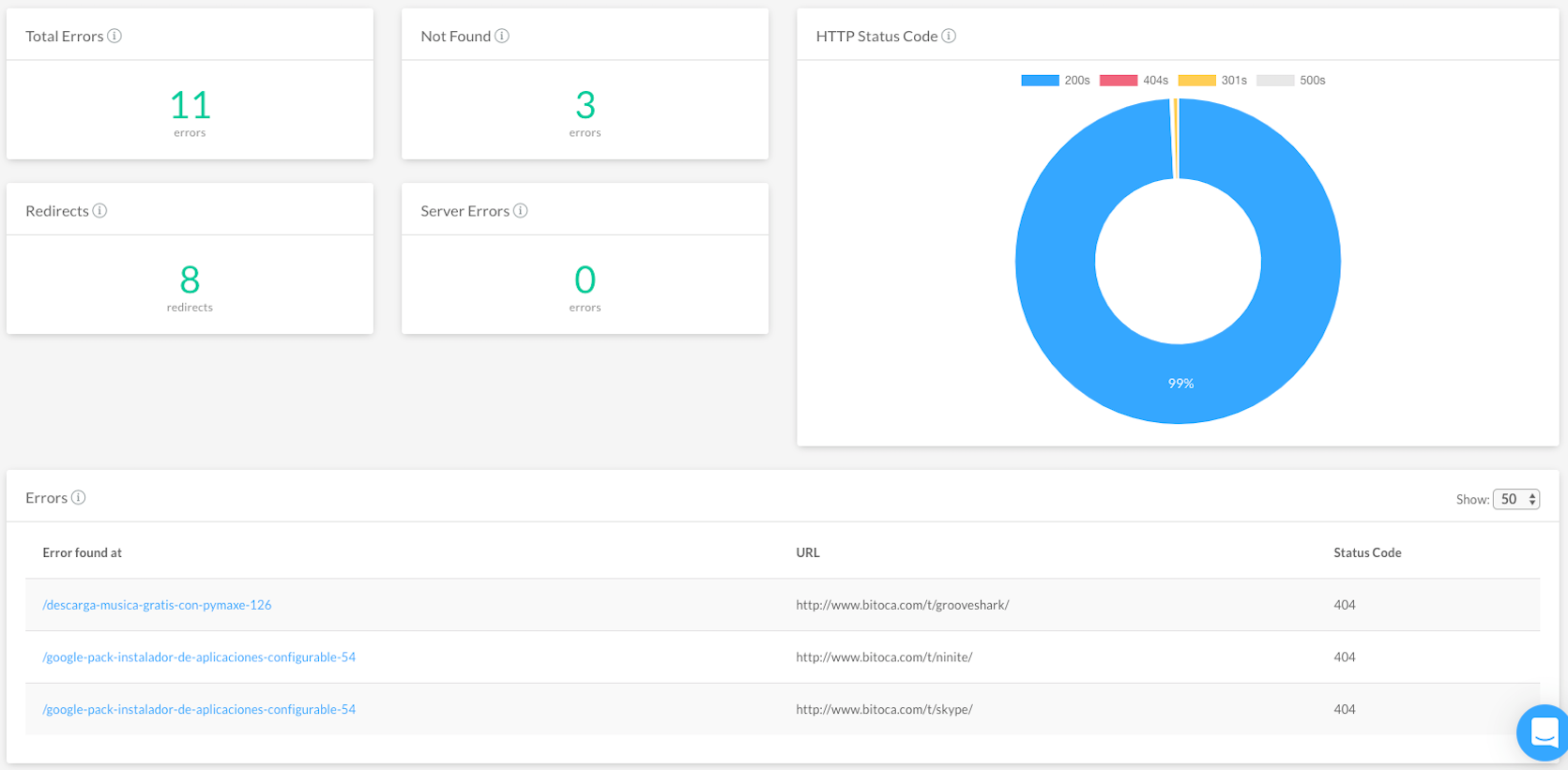An HTTP status code is a server response to a client’s request (browser or search engine). The codes, which consist of three digits, indicate whether a specific HTTP request has been successfully completed.
The first digit can range from 1xx to 5xx, and it defines the class of response.
- Informational response (100-199)
- Success (200-299)
- Redirects (300-399)
- Client errors (400-499)
- Server errors (500-599)
Here, we will focus on the 5xx HTTP responses. You will learn what this code means, the most common causes, how to detect it and fix it.
Table of Contents
What are the 5xx server error codes? When it occurs?
A 5xx code occurs when a server does not support the functionality required to process a visitor’s request. Simply put, it means that there’s an error caused by the server.
In many cases, a chain of servers is handling an HTTP request, so keep in mind that it may not be your server that’s causing the issue.
The second and third digits of the code give us additional information about the type of error.
Let’s go over the different 5xx response codes in detail.
5xx Status Codes
Below is a list of the 5xx codes with a brief explanation of their meaning.
500 – Internal server error
It is a generic error message that means something went wrong on the Website’s server, but the server can’t be specific about the exact problem.
501 – Not Implemented
The server running the site does not understand or does not support the HTTP method sent by the client. This code usually implies future availability.
502 – Bad Gateway
The code indicates that the server acting as a gateway or proxy received an invalid response from an upstream server.
503 – Service Unavailable
The server cannot handle the request due to a temporary overloading or maintenance of the server. When this code appears, Google understands that you have a temporary issue and does not penalize your site or deindex your page.
504 – Gateway timeout
The server does not receive a timely response from another server acting as a gateway or proxy and cannot complete the client’s request within the given time frame.
505 – HTTP Version Not Supported
This error appears when the server does not support the version of the HTTP protocol used in the browser request.
506 – Variant Also Negotiates
The code indicates an internal server configuration error. The server has detected a circular reference when processing the negotiation part of the requested content.
507 – Insufficient Storage
This status code is returned when the server cannot create or modify the requested resource because there is not enough free storage space. Just like the 503 server error, this is also a temporary condition.
508 – Loop Detected
This error appears when the server tries to process the request and finds an infinite loop. This code shows that the entire operation has failed.
510 – Not Extended
The browser does not have the necessary extension to understand the request.
511 – Network Authentication Required
This error appears when the client (browser) needs to authenticate to gain network access. The response representation should contain a link to a resource that lets users send their credentials.
Why should you fix 5xx errors for SEO?
5xx status codes can be very harmful to SEO. As they directly affect the user experience, they have a direct impact on website rankings. The error 500 and 503, which are usually the most common ones to appear, do not allow search engines from crawling the site.
Errors 5xxs are considered the most challenging ones to fix since they often require developers or server administrators. Unlike the 404 or 301, they cannot be corrected by merely modifying the page code, and in many cases, they are more difficult to detect.
Still, you must have a Website free of 5xx if you want to rank on the top of SERPs, so let’s see how you can detect and fix them ASAP.
How to detect 5xx error codes?
As I mentioned earlier, finding pages that return 500s status codes is not easy, especially if your Website is composed of thousands of pages. You could be lucky enough to be notified by a user, but it wouldn’t be the usual thing.
Leaving aside the possibility that you can go page by page to find a 500 error (extremely time-consuming), the best option is to use an SEO Crawler that quickly points out these pages.

You can also use Google Search Console and check any issue at the section “Crawl Errors”. However, the advantage of using an SEO crawler is that you’ll find the errors before Google does.
How to fix 5xx server error
Once you’ve detected any 500s errors with an SEO Crawler, it’s time to fix it.
Before you get down to business, first thing, reload the page that has returned a 5xx error in your browser to see if it persists. Sometimes, this simple action will save you a lot of time. 🙂
Google considers that temporary errors such as 503 can be fixed within a short time so it does not penalize or deindex the pages that return this code. Make sure your web server is active and check if you need to add more space.
- Check the error logs for your server. Performing log file analysis, you can get extra information about your error status codes.
- Make sure your server is not overloaded or misconfigured. In that case, you’ll need to check it with your developers or contact your hosting provider.
- Review the changes you’ve made recently to see if any of them might be the cause. Sometimes, plugin issues such as faulty installation or incompatibilities may lead to errors. Deactivate the plugins and check if the error disappears. In that case, activate the plugins one by one to detect which one is causing the issue.
